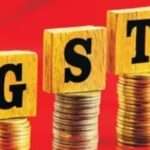The Indian stock market fell sharply today as both Sensex and Nifty crash 2%, a drop that triggered concerns among investors. The drop led to a loss of nearly ₹9 lakh crore in market capitalisation, which also extended to mid- and small-cap stocks, further impacting investor sentiment. Here is an in-depth discussion on the primary reasons that triggered the “Sensex and Nifty fall 2%” headline and a technical analysis of what’s to come next.

Sensex And Nifty Crash: Election jitters in the United States
One of the major reasons for the sharp fall in the market today is the uncertainty surrounding the upcoming US presidential election. With opinion polls indicating a tight contest, global markets are reacting cautiously, impacting investor confidence. Since the US is one of the largest economies in the world, any significant change in its policies can have far-reaching implications on global markets, including India.
Market analysts, including V K Vijayakumar, chief investment strategist at Geojit Financial Services, say that while the election-related volatility may be short-lived, it is contributing to the “Sensex and Nifty crash 2%”. They believe that economic fundamentals in the US will eventually determine long-term trends, but caution should be exercised for now.
Sensex And Nifty Crash: High valuations continue to put pressure on stocks
Even before today’s decline, there were concerns among market participants about elevated stock valuations. The current price-to-earnings (PE) ratio for the Nifty 50 is around 22.7, which is close to the one- and two-year average. Such high valuations mean that stocks are already expensive, leaving limited room for significant upward movement without earnings growth.
Despite the recent correction, market valuations remain a bottleneck. Pankaj Pandey, head of research at ICICI Securities, points out that while some sectors have seen stock-specific corrections, the broader market continues to trade at high multiples. In this situation investors have limited opportunities for fresh gains, leading to selling pressure and contributing to the “Sensex and Nifty crash 2%” sentiment.
Sensex And Nifty Crash: Upcoming Fed Rate Decision
The US Federal Reserve’s imminent policy announcement, expected on November 7, is adding to the uncertainty in the market. The consensus among economists is for a 25-basis-point rate cut, but experts believe this rate cut may already be factored into current market prices, meaning it may not provide a significant boost.
Additionally, fiscal spending promises by both US presidential candidates are raising concerns about higher bond yields. Increased bond yields may make fixed income investments more attractive, leading to funds moving away from equities. This shift in investment preference is one of the key factors contributing to today’s decline and the “Sensex and Nifty crash 2%” scenario.
Sensex And Nifty Crash: Disappointing Q2 Earnings Results
Second quarter earnings of Indian companies came in below expectations, especially in the commodity sectors. These earnings reports, coupled with already high valuations, are adding to the uncertainty about future market growth. While some sectors showed resilience, the overall performance has not met investor expectations.
Vijayakumar of Geojit Financial Services highlights that the disappointing earnings scenario raises concerns about sustaining current valuation levels. For FY25, the projected EPS (earnings per share) growth for the Nifty could fall below 10%, challenging current valuation multiples. This earnings underperformance, especially for the Nifty 50, is weighing heavily on investor sentiment, contributing to today’s market decline.
Sensex And Nifty Crash: Foreign portfolio investors (FPIs) sell heavily
Foreign portfolio investors (FPIs) have been active sellers in the Indian market, driven by a mix of global and domestic factors. Expectations of a new stimulus package in China have made that market more attractive, causing some FPIs to pull back funds from India in favour of China. Moreover, ahead of the US elections and Fed decision, FPIs are booking profits and adopting a wait-and-watch approach.
Santosh Meena, Head of Research, Swastika Investmart said domestic institutional investors (DIIs) have also adopted a cautious stance and are preferring to wait on the sidelines. This combined effect of FPI selling and DII hesitancy is fuelling today’s sell-off, amplifying the impact of the news of “Sensex and Nifty crash 2%”.
Technical analysis: What’s next for Nifty?
From a technical perspective, Nifty50 is struggling to break out of its current bearish trend. Despite several attempts to recover, the index has faced strong resistance around the 24,470-24,540 range. According to Anand James, chief market strategist at Geojit Financial Services, Nifty had managed to hold on to the 24,150 level in previous sessions, but without fresh triggers, the upside momentum appears weak.
To see a sustainable recovery, analysts suggest that Nifty needs to close above the 25,100 mark consecutively. Failure to break this resistance level could lead the index to test lower levels such as 23,900-23,300. Without positive developments, the sell-on-rally pattern is likely to continue, meaning investors may see weakness in the short term.
Conclusion: Cautious road ahead for investors
The Sensex and Nifty crash 2% reflects a combination of global economic uncertainties and domestic challenges. The upcoming US election, the Federal Reserve’s policy stance and India’s weak second quarter earnings have created a complex environment for Indian investors. As valuations continue to remain high, there is limited scope for gains without significant earnings growth or new economic triggers.
The technical outlook for the Nifty remains cautious. With the index unable to break above key resistance levels, investors may have to brace for further corrections ahead. Market participants should closely monitor global events, as developments such as the US election and the Fed’s policy decision could significantly impact sentiment. For now, the focus remains on managing risks amid high volatility and positioning for a potentially uncertain period in the stock market.
For investors, focusing on quality stocks with resilient fundamentals could provide some protection, especially in sectors with strong growth prospects. While India’s long-term economic fundamentals remain promising, caution must be exercised in the near term given global headwinds.
ZERODHA 1) : https://zerodha.com/open-account?c=EJ4366
Angelone 2) : https://tinyurl.com/2gloc3g6 or
Upstox3): https://link.upstox.com/9w4tNo1rK8au7VK47









